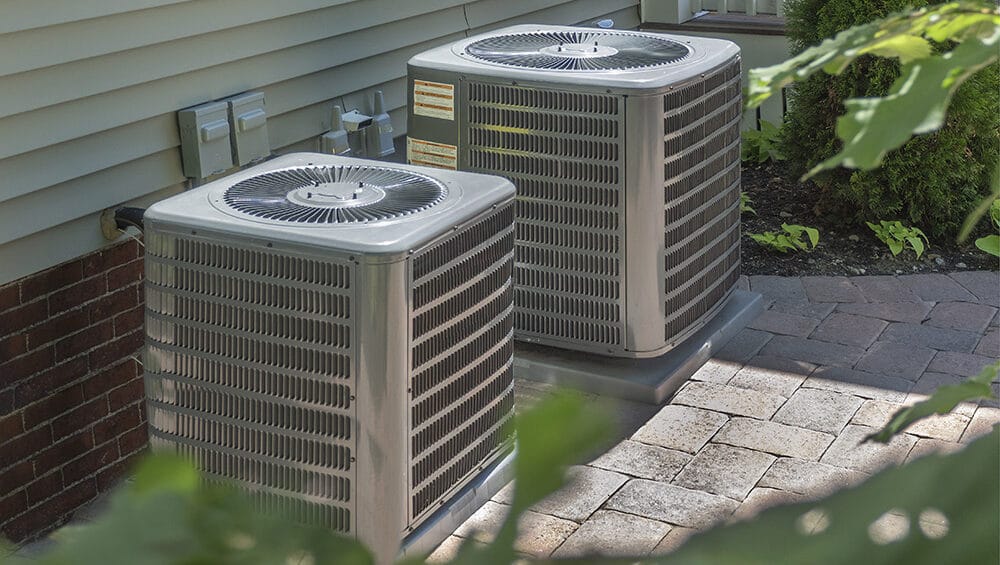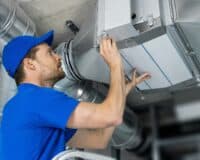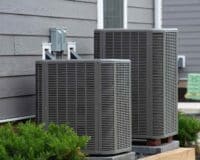When the weather gets hotter, try not to let it get you down! The last thing you want on the first really hot day of summer is to discover your main air conditioner isn’t operational. However, if you don’t do some quick annual maintenance in the spring, this may be the case. Spring is an excellent time to prepare your air conditioner for summer.
An indoor air handler and an outdoor compressor are used in a central air conditioner. The condenser is generally placed outside. This is the portion of your air conditioning unit that you’ll need to clean and maintain. During the cold winter months, your air conditioner has been dormant while leaves and other debris have gathered on it. Filters, condensers, and a few minor inspections will get your air conditioner in working order so it can cool your house effectively this summer.
Here’s how to get your air conditioner ready for summer in 6 simple steps
- Safety First
Before you begin working on your air conditioning system, switch off the circuit breaker. Before servicing your air conditioner unit, always make sure to turn off the electricity at the service panel. The condenser is generally equipped with a weatherproof disconnect box near the equipment. This includes a lever, fuses, or a circuit breaker to shut down the condenser.
- Clean or Replace the Filters
When your air conditioner or heating unit’s filters become clogged with dust, it’s good practice to clean or replace them at least twice a year. Not changing these filters will limit airflow and decrease the performance of your air conditioning unit. Dirty filters can recirculate dust particles into your house as well.
- Clean the Air Conditioner’s Condenser Coils
Clean the condenser coils and fan of debris from your air conditioning unit. The condenser unit, often known as the “condenser,” is usually located outside. It’s a big fan in a metal box with grille-like sides. If your condenser unit was covered over the winter, uncover it now. Make sure no debris is in the fan, then examine the inside of the box. Check to see if anything has clogged the coils. These coils must be cleaned if your condenser unit is to function effectively.
To clean the coils:
- Check to be sure the power to the condenser unit has been switched off before removing any of the components. Then, if necessary, remove the condenser unit’s side and top covers.
- Remove the top. It may be weighted since it is connected to the fan. Note: Do not tug on any of the cables connected to the fan.
- Clean the coils from the outside of the refrigerator with a refrigerator coil brush or a gentle vacuum brush. Cleaning the external surface is followed by vacuuming coils from within. Note: Take great care not to bend the delicate fins or harm the coils while cleaning them.
- Clean and Clear Debris
Remove any leaves or debris from the condenser’s base. Make sure the drain is clear if your air conditioning unit has one. Using a vacuum or a cloth, clean the blower’s fan blades. Clean up any remaining water in the equipment after everything is taken away and cleaned. Reassemble the condenser once all of it is dry.
- Check the Coolant Lines
The refrigerant lines or pipes run from your air conditioner’s evaporator to the condenser outside. Many of these lines are covered with a foam coolant line insulating cover. Check for frayed or missing insulation in any areas that require it. If necessary, replace the insulation with new foam insulation sleeves, or wrap the lines in a spiral fashion with foam insulation tape.
- Test the Unit
After allowing the equipment to dry fully, test your newly cleaned air conditioning unit. To turn on the condenser unit, you’ll need to switch the power back on.
Turn the power to the condenser back on by doing the following:
- Set the thermostat in your home to off.
- Turn on the power at both the disconnect box and at the main panel.
- Switch the thermostat to cool.
Please note: The air handler or furnace blower blows the cooled and dehumidified air through ductwork into your home’s rooms. It is not a DIY project to mend your central air conditioner’s refrigeration system that has been sealed and should be serviced by an HVAC expert. While you may not be able to replace the entire unit yourself, you can certainly do some cleaning and maintenance operations on your own to ensure efficient operation and reduce the need for professional service staff.



